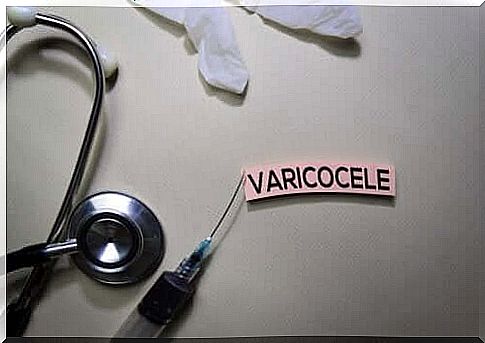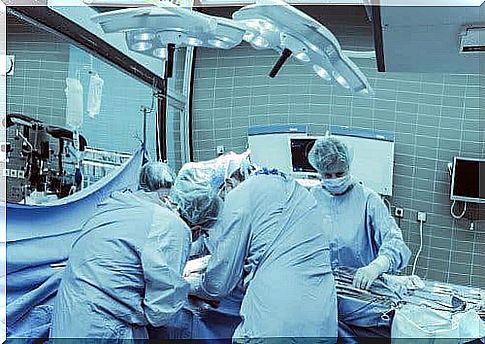What You Need To Know About Varicocele

Varicocele is a disease that affects both men and women, but the rates are much higher among the male population. It concerns the swelling of the sperm vessel, which drains the testicles, or the ovarian frame in the case of women. In the following paragraphs, we’ll tell you what you need to know about varicocele.
This pathology is the main cause of infertility in men. According to a publication of the Mexican College of Urology’s Bulletin, about 40% of male infertility is the result of a varicocele.
According to expert medical websites such as the MSD Manual, this disease is common. Available data even indicate that it occurs in between 15% and 20% of men. However, there are no consolidated statistics on the prevalence in women.
In general, the diagnosis of a varicocele occurs between the ages of 15 and 25. It is rare in men over 45 years of age. If this is the case, it can lead to complications, as in cases where the condition is left untreated.
What you need to know about varicocele: its causes

Varicocele is one of the leading causes of male infertility, mainly due to vascular problems. What you need to know about a varicocele is that it is a widening of the veins of the spermatic cord, which drain the testicle.
In women, it involves the dilation of the ovarian framework. This leads to varicose veins in the pelvic area and causes pelvic congestion syndrome, as an article published in Legal Medicin of Costa Rica points out (Spanish link).
Varicocele can be primary or secondary. Primary varicocele occurs because of an anatomical defect that hinders the reflux of blood into the seminal tract.
At the same time, secondary varicocele results from other factors such as retroperitoneal tumor, renal cell carcinoma, cirrhosis of the liver with portal hypertension, or retroperitoneal fibrosis, among others.
In most cases, varicoceles are extratesticular. Only a small percentage of cases involve intratesticular varicocele. In addition, it is more common for the condition to affect the left testicle. However, it can also appear in the right testicle, or in both.
What you need to know about possible complications of varicocele
Most cases of varicocele cause no symptoms. However, when they appear, they can be uncomfortable and cause mild pain, especially when standing or doing physical exertion.
In general, patients do not start treatment until symptoms appear. This can include a variety of therapeutic or surgical techniques, according to information published by the Mayo Clinic. The same source also states that the main complications of untreated varicocele are the following:
- Testicular atrophy: This causes a significant decrease in the size of the testicles. The normal functioning of the gonads is interrupted and can lead to premature infertility or erectile dysfunction as a result.
- Partial or total infertility: It is possible for varicocele to cause a temperature rise in the testicle. This hinders normal sperm production and leads to total infertility or difficulty conceiving.
Another complication of untreated varicocele is chronic pain. This pain can limit or even hinder some hip movements. In general, the pain responds well to common pain relievers.
Complications with treatment

Normally, scrotal support and vasoconstrictor drugs can successfully treat varicocele. However, if a complication does arise, the next step is to perform surgical ligation. Also, doctors may perform a procedure called testicle embolization.
In either case, complications can arise. Below we describe the two treatments studied by professionals at the University Hospital Center of Coimbra Portugal (Spanish link):
- Varicocelectomy or surgical ligation is an outpatient procedure that does not involve any complications in most cases. The greatest risk is damage to the artery that supplies blood to the testicle, but this is rare. The procedure can also lead to infection, bruising, or damage to surrounding tissue.
- At the same time, testicle embolization is a procedure that is minimally invasive and therefore safer than a varicocelectomy. The risk of complications is much lower and recovery time is much faster.
Both procedures, embolization and varicocelectomy, have a 90% success rate. The difference lies in the fact that the former does not require a surgical incision, which significantly lowers the risks.
Other Potential Risks
As we mentioned earlier, these procedures usually do not involve major complications. However, a study published by Translational Andrology and Urology indicates that we cannot rule out the following possible complications:
- In a small percentage of cases, treatment, either varicocelectomy or testicle embolization, does not improve an individual’s fertility.
- Sometimes the procedure does not reduce the pain caused by the varicocele because the varicose veins in the scrotum persist.
- In rare cases , the formation of hydrocele or fluid in the scrotum can occur.
- In very few cases, patients may experience bleeding of variable intensity, which may require re-operation.
Seeing a doctor is essential
In short, it is vital to emphasize that if you are suffering from any of the symptoms listed above and think you may have a varicocele, it is best to see a specialist. Whether or not you need treatment, a specialist can make a correct diagnosis and also clear up any doubts.








